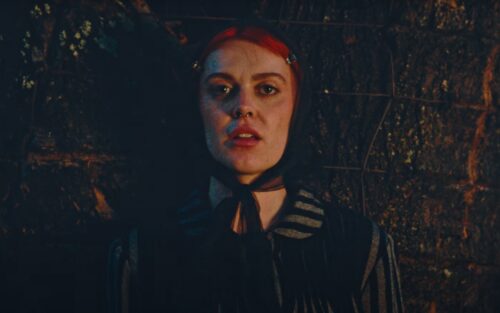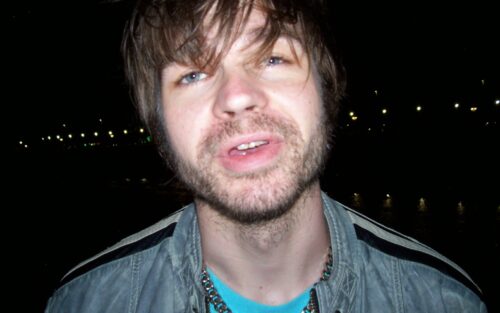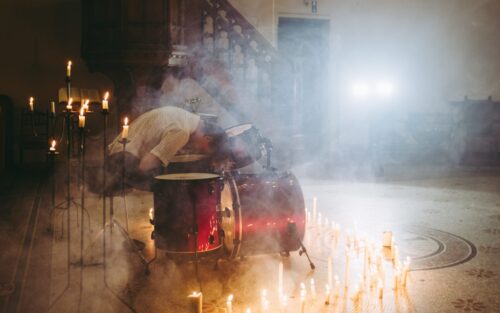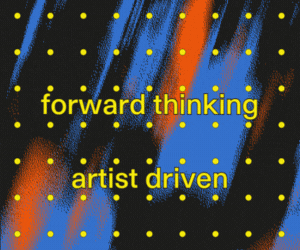Rauw Alejandro Is Redefining Reggaeton
The Latin pop superstar laces up for a disco revival with new album, Vice Versa.
By Luis Minvielle
- Published on
Alejandro is in Mexico City promoting his newest album, Vice Versa. He is also preparing for his first tour dates in the United States, which, as he happily informs us, “are sold out” — a considerable feat since the tour’s first leg involves cities not traditionally associated with Latin communities, such as Providence or Charlotte. “The fact that we’re getting to cities where there aren’t so many Latin people is immense,” he says, in Puerto Rican Spanish. “We’re selling out venues and I’m so thankful to all my fans.”
Pushy music fans often claim that pop stars are blank canvases who owe their success to a group of invisible collaborators. As a global personality who went from rags to riches in a heartbeat, Alejandro is an easy victim for such conspiracy theorists. In the end, It’d be too easy to strip him from credit and assign his sudden takeoff to the machinations of a nefarious syndicate: the unlawful combination of corporate advisors, hired-gun producers, and ruthless marketing executives. But on the contrary, Alejandro can brag about being the musical director behind one of the year’s biggest hits, “Todo de Ti,” a catchy synth-pop dancefloor number that surpassed 300 million streams in July. Against the conspiracists and their false hopes, Alejandro himself conceived and executed the bouncy, lively song. “I was [purposely] looking for that sound,” he says of the tracks’ throbbing, disco-like rhythm. “I play drums, but this time I stepped down from that,” he claims of his involvement in the instrumental side. “I did play the piano on that song, though! We even used a live guitar track and live bass.”
It’s a surprising stunt, given that the reggaetón genre usually employs samples instead of live instruments. As such, by turning towards disco, scrambling synths, and playing live guitar and bass, Alejandro made clear his resolve: to slip in novel sounds into the reggaetón genre. “I want to be experimental and break barriers to represent Latin people and our music,” he says. “Each time I can, I take an artistic swerve. And what comes up puts Latin music at high standards.”
“Each time I can, I take an artistic swerve. And what comes up puts Latin music at high standards.”
Alejandro is contemporary to fellow Puerto Rican reggaetón artist Bad Bunny, who in 2020 released three critically acclaimed albums. The third of them, the trap-rap infused El último tour del mundo, became the first Spanish-language album to hit No. 1 in the history of the United States. “Bad Bunny has accomplished a lot for the genre,” Rauw says. “He breaks outlines and opens doors. It’s good for music because it nurtures it. He keeps reggaetón alive and outside monotony,” he says of Bad Bunny. “And, [with Vice Versa], I tried to do the same.”
Alejandro’s Vice Versa succeeds in innovating. In the strict sense, it’s not a reggeatón album. While it does cast reggaetón’s high-flown sounds, mischievous verses, and continuous rhythm of the dembow, Vice Versa also cruises between disco, funk, drum & bass, synth-pop, and even the Caribbean-brewed merengue. The track “Aquel Nap ZzZz” recalls the singer/songwriter’s how-tos of the Alternative R&B movement. “¿Cuándo Fue?” lifts its breakbeats from a post-rave British boiler room set. The last track, “Brazilera,” features Brazilian star Anitta and resembles the “funk carioca” sound that packs dance clubs across Rio de Janeiro.


Alejandro is a free spirit in the studio — and he’ll call for whatever genre is necessary to convey a particular sensation. “All those moments that the music made you feel… You want people to feel them as well, you know? In the creative side, I always go where my heart tells me to.” On the specific British post-rave sounds, he explains: “I don’t tie myself to any kind of genre. The drum & bass sound fires me up, like the feeling of driving your car to complete a mission. That’s what I feel when listening to that kind of music, and I want to make people feel the same.” Identifying what he loved the most about music allowed Alejandro to think up and upgrade the genre. “I’d listen to music and say: ‘Maybe I can make a fusion out of this, find a theme, and do something that no one has made before.’ I try to evaluate how reggaetón’s doing and fill the empty spaces. And that’s what I find the most fun — the creative side. That’s why Vice Versa has so many elements.”
Vice Versa may be a leaning-edge take on reggaetón, but it shines for its reappraisal of pleasant memories. Aside from retrieving genres from long-past eras, Rauw Alejandro brings back the imagery of analog-camera days. The clearest example is the music video for “Todo de Ti,” which matches the song’s eighties disco tinges and features Alejandro dancing in roller skates in a sepia-flushed skate rink. The video sprang up in Alejandro’s mind as soon as he finished recording the song. “It’s a reference to Roll Bounce, a movie from 2006 or 2007 that goes about the culture behind the four-wheeled roller skates. And the rink is where people would go, skate, fall in love, and exchange feelings. And, you know, people say I can dance a little bit,” he says as he laughs. “I’ve always liked to dance, and dancing and roller skates are a united culture. “Todo de Ti” gave me the vibes of that movie. And I said: ‘Hey, people have seen me dancing but they haven’t seen me dancing on roller skates! So let’s put on some rollers and go disco mode!’”
Alejandro was confident that the song would be a chart-topper. “As soon as I finished the song, I said to myself: ‘This will be big!’” Alejandro even intercepted its release plans — another sign of his artistic control. “We had another song as the lead single. And when I finished ‘Todo de Ti,’ I was like: ‘Change of plans: we’re coming out with this song.’ I knew it was gonna be big,” he says. “When we first thought of ‘Todo de Ti,’ with my producer Mr. NaisGai, I was listening to music from the eighties. I’m also a big fan of Bruno Mars and his funk essence. And I was looking for that sound for the summer — music that fits every situation. In the clubs, on the beach, in your car, in your house. It’s a well-rounded sound,” he defines it.
With its immediate flare-up and sustained success, “Todo de Ti” may inaugurate a new era in which listeners and critics examine the genre without feeling hung up. In the meantime, the novel reggaetón sound continues to top charts and sells out venues — like the lit-up entrance of a winsome roller skate dancer.
By Stephan Boissonneault
Nate Amos revisits a decade of stray ideas and turns them into his most compelling record yet.
By Khagan Aslanov
Mike Wallace’s electro-punk project premieres the hypnotic, percussion-driven video for "Certain Days."











